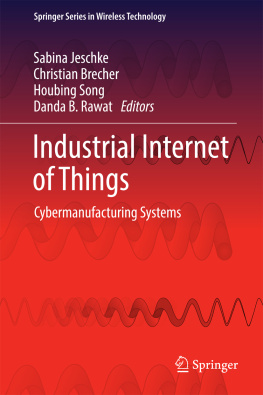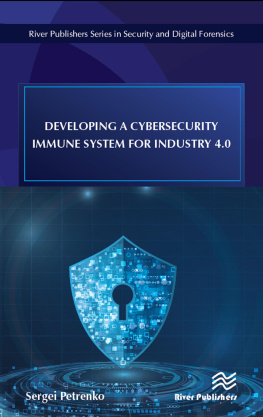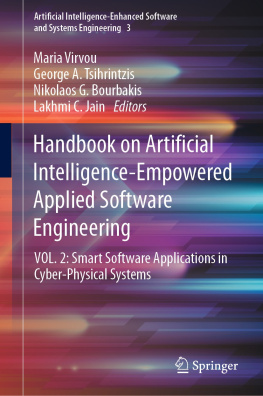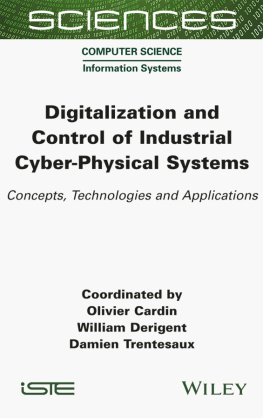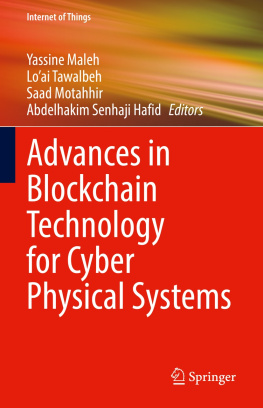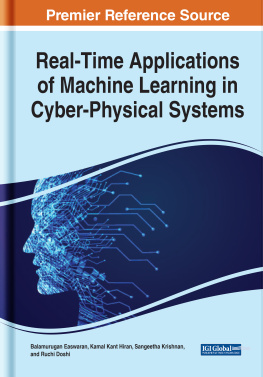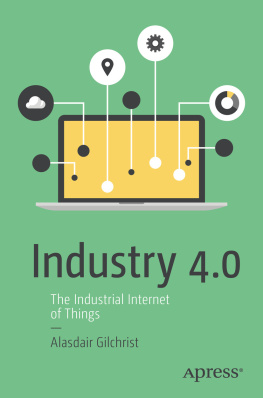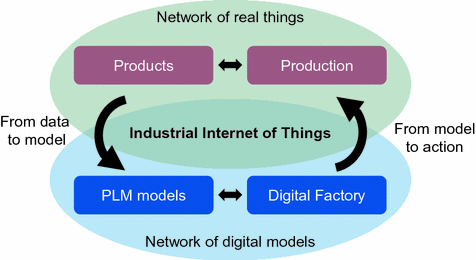Introduction
The Internet of Things (IoT) is an information network of physical objects (sensors, machines, cars, buildings, and other items) that allows interaction and cooperation of these objects to reach common goals []. Please note, that in our understanding the IIoT not only is the network of the physical objects in industry but also includes the digital representations of products, processes and factories such as 3D models or physical behavior models of machines.
In the year 2015, IoT has been declared one of the most hyped technologies [].
In the light of these critical voices it is even more important to analyze where real value can be gained from IIoT in terms of time, flexibility, reliability, cost, and quality. Therefore, we and the other editors are pleased to present many contributions with specific manufacturing applications and use cases in this book. But beyond these concrete scenarios we want to convey the vision of cognitive self-optimizing production networks enabling rapid product innovation, highly individual products and synchronized resource consumption. Therefore, the contributions of this book and the results of the large research initiatives associated with IIoT and Industry 4.0 represent a first step towards these results.
To guide the reader through the book, we will first give a short overview on the history and foundations of IIoT and define the key-terms of this book. Subsequently, the reader may find our overview on global research initiatives helpful for understanding the contributions of this book in the international context. The reader will find slightly different definitions of the key terms throughout the chapters of this book due to these different initiatives. But to give some orientation to the reader, the last part provides a brief summary of the chapters of this book considering the challenges, solutions and forecasts for IIoT.
Foundations of the Industrial Internet of Things and Cyber Manufacturing Systems
IIoT has grown from a variety of technologies and their interconnections. In manufacturing, the first attempts to create a network of things date back to the 1970s and were summarized with the term Computer-Integrated Manufacturing (CIM). Although the ideas of CIM are now approximately 40 years old, most challenges are still prevailing today, e.g. the integration of managerial and engineering processes and the realization of flexible and highly autonomous automation. However, in the 1990swith the rise of Lean Productionexcessive IT solutions were increasingly regarded as inefficient and many CIM projects as a failure. In retrospective, the early disappointments can be traced back to the reason that technology and people were not ready to successfully implement the ideas, e.g.
Immature IT and communication infrastructure
Lack of computational power
Lack of data storage capacity
Limited connectivity and data transfer rates
Missing openness of software tools and formats for data exchange.
Moreover, the CIM movement reached its peak before the great breakthrough of the internet between the mid-1990s and the first years of the new millennium. Now, it is difficult to imagine a world without the internet. However, in the 1980s it was difficult to convey the idea of ubiquitous connectivity. In retrospective, it was almost impossible to realize information exchange on a broad scale within the factory at a time when the rest of the world was mostly not digitally connected.
While CIM was focusing on solutions for the shop floor, Product Data Management (PDM) has been established as a new approach to design networks within engineering departments connecting product data and people. In contrast to CIM, PDM was less a technology push, but originated from the limits of handling large amounts of product data with simple file based systems. Functions like product configuration, workflows, revisions, or authorization are now indispensable for engineering departments in large enterprises and are increasingly important for medium-sized companies. With Product Lifecycle Management (PLM) the network idea is taken further, considering consistent data management as an objective for the whole lifecycle []. In this context, PDM is usually regarded as the backbone of PLM, providing interfaces to different applications during the lifecycle such as production and service. Therefore, PDM and PLM are also a prerequisite for IIoT: The industrial things require product data as a basis for a meaningful communication, e.g. for comparing measurement data to the initially specified requirements associated with the product.
From the perspective of factory planning and operation, the Digital Factory aims to integrate data, models, processes, and software tools [.
Fig. 1
IIoT as the network of real things and their digital counterparts
While PLM and the Digital Factory contribute to the data backbone of the IIoT, many ideas of designing the hardware for IIoT can be traced back to the idea of mechatronics and cyber-physical systems (CPS). Mechatronics is typically defined as the discipline that integrates mechanics, electronics and information technology [].
In the context of manufacturing, Cyber Manufacturing Systems (CMS) and IIoT denote the respective industrial counterparts of CPS and IoT. CMS or Cyber-Physical Production Systems (CPPS) are therefore advanced mechatronic production systems that gain their intelligence by their connectivity to the IIoT. Therefore, CMS cannot be considered without IIoT and vice versa. Typically, when one concept is mentioned, the other concept is implicitly included, as in the definition by Lee et al. []:
Cyber Manufacturing is a transformative concept that involves the translation of data from interconnected systems into predictive and prescriptive operations to achieve resilient performance.
Overall, CMS and IIoT are not individual technologies with a closed theory framework, but rather an interdisciplinary blend from the domains of production, computer science, mechatronics, communication technology and ergonomics, see Fig.. Applications of some general theories, however, can be found across all of the disciplines. Systems theory and cybernetics can be seen as the most general approach to describe the interaction between different people and things with the aim to design cybernetic feedback loops that lead to self-optimizing and robust behavior. To understand, predict, and optimize the system behavior it is a common approach to build models that can simulate the system dynamics. Further, system design includes creative action that can generally be put into the framework of design theory, e.g. design thinking. These general theories can be considered as the glue for the individual domains that enables to leverage the synergy between them.

